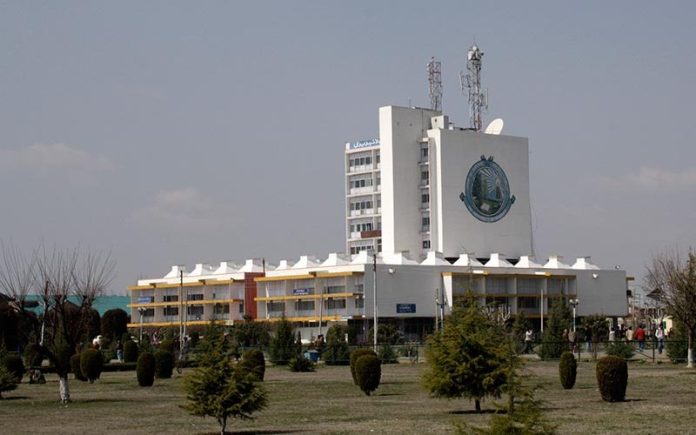The recent National Institutional Ranking Framework (NIRF) 2024 results have placed Jammu & Kashmir firmly on the map of India’s higher education landscape. The performance of the University of Kashmir and the University of Jammu in particular, as well as several other institutes in the region, is a testament to the progress and potential of educational institutions. For the first time, JU has broken into the top 50 universities in the country, securing the 50th rank, while KU has also made a strong showing, ranking 45th. These are remarkable achievements considering the challenges faced by educational institutions in J&K, from infrastructural issues to disruptions caused by other reasons.
The NIRF rankings, established by the Union Ministry of Education, serve as a national benchmark for the quality of higher education institutions in India. They evaluate institutions based on five key parameters: teaching, learning, and resources; research and professional practice; graduation outcomes; outreach and inclusivity; and perception. Given these factors of evaluation, the inclusion of KU and JU in the top 50 universities is significant not only for the universities themselves but also for the broader educational ecosystem in J&K. It signals to the rest of the country that institutions in this region are capable of competing with the best in India. This recognition can attract better faculty, more students, and greater research funding, creating a virtuous cycle of improvement and excellence.
KU and JU have both shown remarkable resilience and growth over the years. KU, with its 69th rank in the overall category and 45th among universities, continues to be a beacon of higher education in the region. However, it’s worth noting that KU’s ranking has slipped from last year’s 33rd place among universities, indicating certain areas where improvement is needed. On the other hand, JU’s rise to the 50th position marks a significant milestone. The university’s consistent efforts to enhance its academic and research output have paid off. The leadership at both universities deserves commendation. LG, the Chancellor of both universities, has played a pivotal role in steering these institutions towards excellence.
Beyond KU and JU, several other institutions in J&K have also made it to the NIRF rankings. The SKUAST of Kashmir and Jammu have shown strong performances in the Agriculture and Allied Sectors category. SKUAST-Kashmir secured the 10th rank, while SKUAST-Jammu made a commendable entry at the 20th. In engineering, the IIT Jammu and the NIT Srinagar have also made their presence felt. IIT Jammu’s rank improved to 62nd from 67th last year, and NIT Srinagar climbed from 82nd to 79th. These improvements, though incremental, reflect the institutions’ commitment to enhancing the quality of education and research. The IIM Jammu continues to hold its ground in the management category, securing the 42nd rank. Meanwhile, the Department of Architecture at SMVDU secured the 31st rank among the top 40 architecture and planning institutes in India. Importantly institutions from both the Divisions have excelled.
While the NIRF rankings highlight the achievements of J&K’s educational institutions, they also serve as a reminder of the challenges that remain. The slipping rank of KU and the absence of many other institutions, like BGSU, GCET, and UIET, from the top 100 overall rankings indicate that there is still much work to be done. One of the critical areas for improvement is research and professional practice. More focus on high-quality research output, patents, and industry collaboration is essential. Additionally, enhancing infrastructure, particularly in terms of laboratories, libraries, and digital resources, will be crucial in improving the teaching-learning environment. Outreach and inclusivity also remain areas where J&K’s institutions can further improve. The journey towards making J&K a hub of quality higher education requires sustained effort, innovation, and support from all stakeholders. With the right strategies and continued focus on excellence, J&K’s educational institutions can not only maintain their rankings but climb even higher in the years to come.


